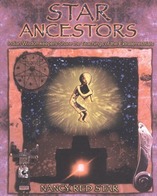 I am a believer in life beyond what most of us know about on earth, so I entered this book wanting to know more about those who share our Universe. Star Ancestors: Exterrestrial Contact in the Native American Tradition, edited by Nancy Red Star, is a compilation of interviews with various Native American individuals regarding extraterrestrial life. Because they are oral interviews, the prose can be a bit wandering and difficult to follow at times, though the text has been well-edited. There is a great diversity in those who have contributed to the book. Many of the chapters sound as though they are ramblings of delusional people. Only two of the contributors really jumped out as individuals whom I would consider reading more from, Paul Werner Duarte and Sequoyah Trueblood. The only common theme in these interviews is that they all touch on the interactions of other life forms with those on earth. Beyond that, the opinions vary widely about whether the earth is about to face apocalypse or enter into a heavenly state. Some authors believe the next generation will destroy the earth; others feel it will save the planet. The structure of the book seems a bit odd at times with unrelated poetry interspersed in blocks at the beginning and end of each chapter. There are mini biographies and author comments at the beginning of each chapter, too, making the layout a bit clunky. While there are lots of illustrations and photos, many of the photos are of poor quality. Quite a few of the illustrations seem completely out of place and unrelated to the author or topic at hand. It took me almost 18 months to get through this book because I found it so meandering. Aside from those two particular chapters by Duarte and Trueblood, I wouldn’t recommend the book to friends. It just didn’t provide the information I was hoping to find, nor did I get a great deal of pleasure out of reading what was there. (For those who are chemically sensitive, please note that the brand new edition of the book I purchased used incredibly toxic ink. I can handle most books in print now after a bit of off-gassing, but this one still emanates toxins after owning it for 18 months. This also greatly impeded my progress in reading this book.) © 2015 Elizabeth Galen, Ph.D., Green Heart Guidance, LLC 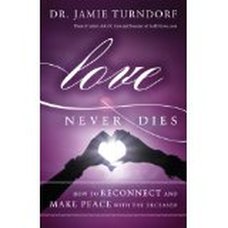 (I received a complimentary copy of this work from Hay House via NetGalley. The opinions here are my own and are not influenced by anyone.) I’m a fan of many of the Hay House authors, so seeing that publishing house associated with a new book induces me to try an author I might not have read otherwise. In most cases, I’m pleased with the selections I read from Hay House. This was not one of those cases. In Love Never Dies: How to Reconnect and Make Peace with the Deceased, Jamie Turndorf, Ph.D., explores her newfound connection to the spirit world after the death of her husband, former Jesuit priest Emile Jean Pin. As a former atheist, this new world of spirituality is an adventure for Turndorf, one she approaches with the blind enthusiasm of a young child after she conquers her initial misgivings. After her husband’s unexpected death from a reaction to a bee string, Turndorf is surprised to discover her connection to her beloved Jean continues through their deep spiritual love for each other. She writes that together they have a ministry to help others in processing death and connecting to those in the afterlife so that all involved may continue to grow and heal. Love Never Dies does have a few good qualities. It is simply written making it accessible to the popular masses. The book also has the potential to comfort many in the first and last sections where Turndorf describes her experiences and the experiences of her clients as they reconnect with their deceased love ones. The book brings up an incredibly large number of questions for a book group to discuss around life, love, healing and death. From there, however, the book simply falls apart. It’s repetitive and poorly edited starting with the weak rhyming poetry at the beginning of each chapter. Turndorf proudly declares that she hadn’t checked out the “competition” before writing her book making it an all original work. While there are merits to an untainted narrative, those merits are outweighed by the negatives in this book. Turndorf’s lack of vocabulary to discuss concepts such as synchronicity weakens her arguments and presentation immensely. The result is a book that feels like an amateur falsely pretending to be a professional. Turndorf also is blinded by her own narrow experiences regarding the metaphysical world. She only sees what she wants to see and doesn’t consider that there are possibilities beyond the definitive answers she purports to reach. For example, Turndorf declares that demons or negative spirit entities might exist though she’s doubtful about it. She thinks that if negative spiritual beings do exist, Jean protects her from them always. Any experienced psychic, intuitive or medium who has worked extensively with the metaphysical will cringe at this naïve view: In his Hay House publication Infinite Quest: Develop Your Psychic Intuition to Take Charge of Your Life, John Edward speaks extensively on the importance of spiritual protection when one is working with the other side. Turndorf’s inexperience becomes dangerous as she guides readers into murky waters without life jackets. Furthermore, Turndorf blindly believes that all the departed are willing to work on their faults and help their living loved ones heal. This, too, is a declaration of an inexperienced practitioner who is, in my words, blinded by the white light. Other gifted mediums such as me are able to encounter spirits in all their essence, seeing their soul level faults which do not miraculously heal upon entry to the afterlife. Many souls choose not to work on their own healing in the afterlife, no differently than their course here on earth. In those cases, Turndorf’s advice risks connecting hurting individuals with souls who will continue to emotionally and spiritual abuse them from the other side. This is not only ignorant, but it’s dangerous and is the last thing a psychologist should want for clients. Even on a much simpler and less dangerous level, Turndoff offers bad advice to those wanting to begin meditation as a means to connecting with departed souls. Setting up beginners with the task of meditating for many hours is going to defeat many people before they even get out of the starting gate. It’s far better for beginners to slowly introduce themselves to meditation to reduce the risk of perceived failure and to encourage successful future experiences which may eventually be longer. Turndorf’s faulty logic is so convoluted at times that it is difficult to follow. Throughout Love Never Dies, she contradicts herself on larger philosophical issues. Turndorf presents the concept that things that happen more than three times are a scientifically valid result. Unfortunately, she fails to recognize that even if something occurs three times, it’s still possible to misinterpret information about those results. Throughout the book, I feel she often misinterprets her experiences because of her lack of experience and narrow-minded views. For example, Turndorf declares many times that we avoid loving fully because losing a loved one is so painful. However, there are other possibilities for why we might restrain our love that she never even considers. It’s possible that we don’t love fully because we don’t know how to. It’s also possible that we don’t love fully because we don’t believe we deserve love. This narrow perspective continues as Turndorf obsesses over her theories that she is metaphysically gifted because of her premature birth and three month NICU stay away from her mother. She writes about high fevers and illness predisposing people to being able to being open to spiritual contact, yet she fails to examine the role of her own experiences with Lyme Disease in regards to her metaphysical experiences. As a practitioner who has had Lyme and who works with many others who have Lyme, I would argue that the vast majority of people who deal with chronic or late disseminated Lyme Disease are those who are metaphysically gifted. A little research outside of her own bubble would help Turndorf to see these other possibilities. As the book progresses, I found Turndorf’s words to her clients and to her readers to be cruel and potentially damaging. I cringed as Turndorf relates how she said to a newly bereaved parent that “she could view this recent loss as a gift from the spirit.” While this lesson is true on some levels, the way she phrased this to a parent who has recently lost a baby is heartless at best. Furthermore, comparing our pain to others’ is not beneficial. Telling ourselves “it could be worse” demeans the pain we are experiencing. Turndorf writes, “When we see someone in pain, we’re being invited to stop feeling sorry for ourselves and give thanks for the problems we have that pale in comparison. Another person’s difficulty reminds us that we could have it so much worse.” What she fails to contemplate is that some of her readers (including me in my not so distant past) will fall into that category of having things “so much worse.” Having been told many times by others that they could look at my life and realize how good they actually have it, I can speak from experience that such an attitude does not help the person undergoing the trials. The heartless response simply makes their pain increase. If all of these issues aren’t enough, I found Turndorf’s basic psychological advice to be weak at best. After 30 years’ experience in practice, she is not a novice. She earned her Ph.D. in clinical psychology from California Coast University in 1994. She is a nationally known psychologist using the pseudonym “Dr. Love.” However, her personal relationship with Jean raised many flags for me as a reader and life coach, beginning with the fact that she was 21 and he was 58 when it began. Turndorf claims that she and Jean had a perfect spiritual love, yet the aspects of their relationship she shares demonstrate a couple that struggled to love each other in their earthly forms. She asserts that Jean was “one of the world’s true mystics” but he didn’t know he could be so close to her in spirit form. This doesn’t build his credibility or hers. Even Googling her late husband (who died in 2006, after the advent of the internet) does not turn up the abundance of hits one would expect from a man whom she claims was a one of the 50 most holy people to have lived in the eyes of the Dalai Lama. As she describes their relationship after he “left his body,” Turndorf sees her late husband’s love as fulfilling her and becoming her own love. Almost all psychologists would argue that seeking to use another’s love as a replacement for self-love is not a healthy approach in the long term. Finally, in one of the experiences at the end of the book, she details of a client named “Mo.” Turndorf uses guilt to trick Mo into working with her deceased husband. This woman clearly has spent a lifetime being manipulated by others who prey on her overactive sense of guilt. A healthier treatment option might have been to work with Mo to recognize her issues around guilt until she regained the self-esteem necessary to work on herself out of self-love. The ends did not justify the means in this treatment. Turndorf seems to think grieving is the only reason people need to connect to Spirit and those on the other side. As she presents the issues in Love Never Dies, she fails to see how other tragedies can be more devastating and more impactful that grief. Her narrow-minded and uneducated views result in a book that will help facilitate discussion about important topics but which ultimately may give some very bad advice to vulnerable readers. (Attached below is a PDF of questions that could be used for book group discussions. Feel free to alter or edit these questions for your own personal use in a group discussion or journaling.) © 2015 Elizabeth Galen, Ph.D., Green Heart Guidance, LLC
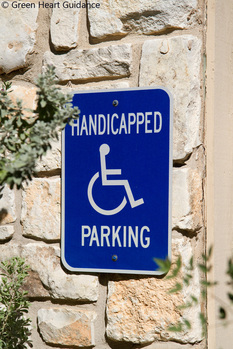
For the longest time, I would not accept that I needed a disabled parking placard. I rarely went anywhere, and when I did, I was usually able to find close parking. However, that all changed when my Lyme doctor moved into a medical complex for which most of the parking was on the next block. I quickly got him write the prescription for the permit. Years later, another friend with Lyme taught me to quit looking at it as disabled parking but instead to refer to it as “rock star parking.” The humor of that idea makes the need for the permit a little easier to accept.
I am now truly grateful for that permit as it enables me to save precious energy and limit my pain. The city of Austin also offers extra benefits to those with disabled permits including free parking and no time limits at any city parking meters. However, those benefits are often negated by the fact that parking is not available. The city does have disabled parking spots scattered around downtown, but they’re rarely where I need them to be. In one location, there are five disabled spots all clustered together on one block with no important buildings on it—in other words, inconveniently located. I’ve also had times where the nearest parking I can find is four or six blocks away from where I want to go, and since walking even a block can be difficult for me, that’s not close enough. I end up having to go home without attending the event I wanted to go to. The same is true at many big public events such as those held at Zilker Park or various farmers’ markets. It’s clear that those planning the events assume that all who are disabled are in motorized wheelchairs or have people to push them in their wheelchairs. They don’t realize that many of those who are disabled are mobility impaired without a wheelchair. Even though they provide the closest parking for the disabled, it’s still not close enough at some events. It means those events are inaccessible for me. Murphy’s law dictates that there is sometimes a surplus of disabled parking spots when there are no other parking spots to be found such as at a shopping center. However, there never seem to be enough at Whole Foods when I am at the downtown store, the Gateway store, or at the Domain. I’ve also run into major problems with not enough disabled parking at one of my doctors’ offices. When I have appointments there that are after 8 a.m., I often cannot find flat surface parking, and the building is situated on one of the few hills in Austin. That means that if I can’t find a flat surface spot, disabled or not, I can’t park my car and I can’t get in to my appointments. I’ve asked the building management to add additional spots, but I was ignored. As a result, I contacted the Texas Department of Licensing and Regulation to discover that any medical building built since 2012 or which has performed any sort of renovation on the facility since 2012 is required to designate 20% of their parking as disabled. Individuals can file a complaint with TDLR to start an investigation into violations. Unfortunately, however, the grandfathering clause on this code means that many medical buildings are exempt from this requirement. So why is this lack of disabled parking a growing problem? I’ve rarely seen abuse of disabled parking spots in terms of those without permits using them. I’ve also never seen offenders ticketed for parking illegally despite the hefty fines they would face if caught, so I’m sure that does motivate some people to abuse the system. I think the larger problem is with the aging baby boomer population which is increasing the number of individuals who genuinely need disabled parking, yet the laws are not being changed to increase the number of spots available. I also think there are doctors who will liberally dispense placards without justification merely because patients ask. Furthermore, in Texas, each disabled individual can get two placards at a time when no person really needs more than one: I used to easily move my only one between our two cars when my ex-husband and I still lived together. By distributing an extra placard to each disabled person, the system is setting up an easy way to commit fraud. Disabled parking permits definitely have a black market value: One friend had her car broken into and the only thing stolen was her placard. Even if individuals don’t sell their extra placard, they could illegally gift it to a friend. While one is required to provide ID showing that the permit is his/hers/hirs if questioned by an officer, I’ve never seen this happen, either. Disabled parking is vital to those of us with chronic and extreme health issues. I’m grateful it exists. However, it’s a far from perfect system that needs a great deal of updating and revision to keep up with the changing demands of our current world. © 2015 Green Heart Guidance 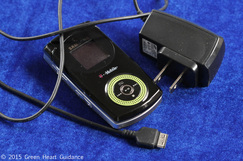 My old cell phone that did not survive the washing machine. Oops. My old cell phone that did not survive the washing machine. Oops. As I’ve mentioned before, I’m a regular reader of The New Yorker. I’m usually a few issues behind, and I don’t always read them in order, but I do eventually read about 80-90% of the articles in each issue. In the February 9, 2015 edition, there’s a great article entitled, “R U There?” by Alice Gregory. The article explores the founding and function of the Crisis Text Line, a non-profit established in 2013 by Nancy Lublin and Stephanie Shih. Through their work with DoSomething.org, the two discovered in 2011 that there was a great need for crisis help by texting especially for teenagers. Reading this article was eye-opening for me as I felt my age declaring itself not so subtly. I’m a dinosaur when it comes to phones: I don’t have a smartphone (though that will be changing soon), and I only text a handful of people. For the most part, I’m of the e-mail generation. That’s my preferred method of communication if I’m not talking to someone in person. Yet I immediately realized the truth in what the article related: Today’s teens communicate through texting. There’s no doubt that if you have a teen and you give them a phone, they need an unlimited texting plan lest you end up with an inordinate mobile bill. While I may not like the way our society constantly has their eyes aimed downward at their phones, it is the reality in our world at this point, especially among younger generations. Clearly the Crisis Text Line is an amazing organization in what it does to help individuals who need emotional support. I have no doubt other organizations will eventually see the Crisis Text Line as a role model for further advances in helping clients. It truly is a victory for the vastly undersupported and underfinanced mental health services in the U.S. However, there was a moment in the article when all I could do was cringe. Gregory writes, “[The Save-A-Life League] also raised summer-camp tuition for the children of suicides.” Here, in an article in a liberal intellectual publication that is extolling the wonders of emotional support for those in crisis, was an unconscionable error that continues to devalue the lives of those who live and die with mental illness. While it is technically accurate to call someone who has committed suicide a “suicide,” the ethics and political correctness in doing so are questionable. When people commit suicide, it’s their final act. It’s a major choice, one that irreparably impacts their lives and the lives of those around them. However, that action does not negate the rest of their lives. They were sons, daughters, mothers, fathers, lovers, leaders, students, teachers.… They did so much more than just their final act of committing suicide. Is it right that they should be identified as their final act? People first language is important. It helps remind us that we are more than the things that might restrict us in this world. When people commit suicide, they do not become their action. While most would not condone that action, suicide is an action taken in a time of great pain and desperation. It’s not the only way people should be remembered. The New Yorker could have so easily edited that sentence to read, “[The Save-A-Life League] also raised summer-camp tuition for the children of those who committed suicide.” The sentence doesn’t become bulky; in my reading, it actually becomes clearer in many ways. Moreover, the revised sentence refrains from demeaning individuals who were dealing with mental health issues. We have a long way to go in our nation to help those who deal with mental illness. It’s still a taboo topic. Therapy is still not accepted by many. Few mainstream alternatives besides drugs and exercise are promoted to help those fighting even the most minor mental health issues. I look forward to a day when our culture has a better understanding of mental health struggles and is able to offer more holistic treatments that are affordable and readily available. © 2015 Elizabeth Galen, Ph.D., Green Heart Guidance, LLC 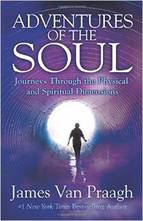 (I received a complimentary copy of this work from Hay House via NetGalley. The opinions here are my own and are not influenced by anyone.) When I read metaphysically oriented books, it is usually with two goals in mind. The first and foremost is my own personal growth and development. I’m reading to learn and expand my horizons. The second is to help others. As I read, I am often thinking about how the concepts and examples can help my clients. Adventures of the Soul: Journeys Through the Physical and Spiritual Dimensions is a book that both expanded my horizons with a few new concepts and provided some great information for me to use in teaching my clients. Adventures of the Soul is the first book by James Van Praagh that I’ve read, but it won’t be the last. I’ve heard Van Praagh speak on various online seminars produced by Hay House, so I knew that I was on the same page as him, so to speak, when it comes to metaphysical beliefs. However, some great speakers aren’t great authors. That’s not the case here. Van Praagh’s relaxed writing style feels like a friendly conversation. His own material on our souls’ journeys both here and in the afterlife are interspersed with personal anecdotes, popular culture references including relevant movies, and information from other books. I ended up with a reading list of quite a few other books I wanted to read as a result of reading Adventures of the Soul! The premise of Van Praagh’s book is that our journey on earth is to learn to vibrate with the pure love of the Spirit. Our human incarnations provide us with the opportunities to face challenges which help us grow. Van Praagh expands upon ways in which we can raise our energetic vibrations, thus improving our soul and our quality of life. He concludes the book with several guided meditations for one to use in this quest. While these are actually the types of meditations that initially turned me off the concept of meditation when I was a teenager, they are likely very helpful for many others who need guidance in beginning their meditation practice. Van Praagh also spends a good deal of the book discussing the afterlife, reincarnation and what he has learned through his years as a medium. As someone who has only spent a few years working professionally as an intuitive and a medium, this was the section of the book where I found the most new (to me) information. Van Praagh’s concepts of the various layers of the place where we go after our mortal deaths expanded on details which I’ve not yet encountered in my work with the other side. I was aware that different layers exist, but I’ve not had reason or desire to probe further into information about them. Because so much of the other detail Van Praagh gives resonates with what I experience in my work, I’m inclined to trust his descriptions of details of those things I’ve not yet encountered. This book gave me a foothold for doing more exploration in that area should I ever choose to do so. One of the things that I appreciated most about Adventures of the Soul is that Van Praagh emphasized the concept of taking what works for you and leaving the rest behind. He quotes Buddha as having said, “`Believe nothing, no matter where you read it, or who said it, no matter if I have said it, unless it agrees with your own reason and your own common sense.’” It’s refreshing to read a book from an author who doesn’t see himself as the absolute authority on the topic he’s writing about, a sign that Van Praagh wasn’t letting his ego interfere with his mission as he wrote the book. (Attached below is a PDF of questions that could be used for book group discussions. Feel free to alter or edit these questions for your own personal use in a group discussion or personal journaling.) © 2015 Elizabeth Galen, Ph.D., Green Heart Guidance, LLC
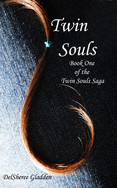 When I’m dealing with high pain levels that are enough to keep me from being fully functional but not enough to wipe out my cognitive abilities, I often turn to fiction for distraction from my pain. As with my movie selections, I prefer works that include a great deal of character development. The following are some of the best novels I’ve read lately. Twin Souls by DelSheree Gladden is primarily a fantasy, but Gladden also draws on shamanic traditions including herbal medicine, Native American mythology, and animal guides to create a wonderful novel about love and mystical power. While the book initially seems to be just another teen romance, it eventually blossoms into a powerful story that sent me straight to purchase the next in the series. I found this book after having read the first book in Gladden’s enjoyable Aerling series; unlike that series, Twin Souls is well-edited making it easy and addictive to read. 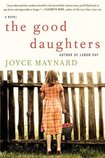 A month after finishing The Good Daughters by Joyce Maynard, I'm still periodically thinking about the characters and the conflicts in the novel. That's always a good sign when you can't get the book out of your mind because it has captivated you so much! The primary issues in the book stem from the age old debate around nature versus nurture in families of origin. While the "secret" of the book was obvious to me from the beginning, its slow revelation was enjoyable for the most part. The narrative switches between two different women, one of whom is being raised on a farm for a large portion of the novel and the other who purchases and runs a farm as an adult. Because the chapters are so short, it sometimes left me feeling like I was watching a ping pong game. Overall, though, it was a great novel that I enjoyed. 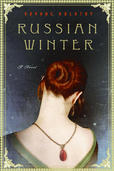 Russian Winter is a long work that also uses a split narrative that shifts between time periods making it feel like two separate novels integrated into one. The book is an addictive page turner, and while it’s already quite long, I didn’t want it to end. Author Daphne Kalotay's vivid descriptions of communist Russia and the life of professional ballerinas were entrancing for me even though I’m not a huge fan of ballet or tales of communist oppression. I also loved the research about historical jewels which one of the female characters undertakes as part of the novel's primary plot; this is the kind of project that historian in me also loves to do. Kalotay did a fabulous job of wrapping up the story of the characters and their interactions by the end of the work and completed it in a way that felt satisfying.  I was completely captivated from start to finish with Wildflower Hill by Kimberley Freeman and think it is one of the best books I’ve read in a long time. Written in yet another split narrative primarily between the present time and the 1930s, both storylines of a grandmother and her granddaughter kept me enthralled. One of the narratives of this story also deals with the tales of a professional ballerina, but it is after the dancer’s career has ended. Like so many of the other books I’ve read recently, the story deals with the definition and perception of family. Freeman has a magically fluid prose that I thoroughly enjoyed, and while she wrapped up the story well by the end, I still wanted more. She is an author whose other works I will definitely read in the future. © 2015 Green Heart Guidance  I am dying from the treatment of too many physicians. ~Alexander the Great Over almost 12 years of dealing with chronic illness plus another 28 years of living, I’ve worked with many health practitioners. One of the harder things for me to face is when I have to fire a practitioner. In the case of general practitioners whom I only saw a few times a year, it wasn’t as big of a deal. I doubt they even noticed when I switched to another doctor. But when one is working with practitioners on a weekly basis, if not more frequently, intimate relationships develop that are harder to walk away from. Still, it’s important to move on if one’s health care providers are not meeting one’s needs. In the past, I often felt guilt when I have left a practitioner, especially when it is someone who has a great reputation in the healing community. The guilt was because I felt like a failure because I couldn’t make the relationship with that practitioner work; that was an issue I had to work through to understand that there was no need for guilt. The truly best practitioners will not hold anger against you for moving on. They will know that you are now meant to work with someone else. Not every practitioner is right for every client or patient, and even if one practitioner is right for you at a certain point in your life, he/she/ze may not be right for you after a few years. We all grow and change. Psychotherapists are one type of provider with whom it can be very hard to find the right person to work with. Sometimes you know right away that the match is good or bad, and sometimes it’s not as easy to figure out whether you should move on. When I was looking for a therapist in recent years, it took five therapists before I found the right one for me. The first woman I was with for five weeks, but she would just let me babble and stare at me before asking me generic questions like, “How do you feel about that?” I prefer my therapists to interact more with me and guide me in my healing. The second therapist was a wonderful woman whom I think will develop into an amazing practitioner, but she simply didn’t have the experience to work with someone dealing with my issues. Another therapist I saw lasted eight weeks, though I knew after four that I should leave. I was at a very stressful juncture in my life when I thought any therapist was better than no therapist. Unfortunately, that’s not true. This therapist was very patronizing and too emotionally detached from her clients. While she has a great reputation among other therapists in the area, she was not the right therapist for an intuitive empath for me. The fourth therapist I was with for four months; she was fabulous, and I still recommend her to others. However, we hit a juncture where her personal issues interfered with my treatment, and I knew it was time to move on because she was not going to be able to meet my needs. The final therapist who didn’t work out was one who immediately began to dump her issues on me, wanting me to heal her rather than her assisting me in my healing. It took only two weeks for me to see that she was far too toxic of a person for me to work with. After such a long road, the therapist I finally ended up with is an amazing woman whom I’ve worked with for three years. She’s helped me to grow and change in amazing ways. I’m grateful for all she’s taught me. The journey to find her was long, but it was worth it in the end. One of the other lessons I’ve had to learn is that reputation not everything. Just because a person is supposedly “the best” in your area, that person may not be the best for you. When my twins were born, I saw a lactation consultant who is often considered the best (probably because she tells people she is). Unfortunately, she gave me a great deal of bad advice which created further problems with breastfeeding. It was actually the lactation consultants at Mom’s Place, a WIC center to support breastfeeding mothers, who helped repair and save my breastfeeding relationship with my twins. I will always be grateful for how much they helped me. Likewise, I spent many years seeing a local bodyworker who has an amazing reputation in the Austin healing community. However, she was just not the right person for me and my body. I’ve found others who have been able to make more progress in less time using the same modalities that she did. The more frustrating situations for me to leave are ones wherein the practitioners are really talented and amazing people whose work I love but whose personalities become unbearable for me. I saw one bodyworker who did great work, but by the time I quit seeing her, I was leaving her office feeling judged and criticized every single time. I was resenting the time I was spending with her rather than benefitting from it. While she was well-meaning, it was time for me to set boundaries to protect my emotional self while still getting the physical care I needed. Likewise, another practitioner I saw was amazingly gifted but his ego began getting in the way of our work. He was unable to wrap his mind around the realities of my life, including my gluten sensitivities, and was issuing too much judgment about my personal life for me to continue seeing him. He’s someone whom I really miss seeing, but the emotional toxicity was just not supportive of healing for me. A third bodyworker I previously saw has narcissist personality disorder; she was suffocating to work with. After leaving all of these practitioners, I talked with other people who had the same experiences with them which helped me to understand it wasn’t my issues causing the difficulties in these situations. I’ve also learned the hard way that when a practitioner physically hurts me, it’s absolutely time to leave. Second chances just end up causing me more trauma. In one case, I left my first appointment at a chiropractor’s office feeling emotionally and physically drained. By the time I got home, I was in awful physical pain. I had to get a massage therapist to fix what the chiropractor had done to me. So many others had sworn to me about this man’s healing ability, but I didn’t experience it. Fortunately, I had enough sense not to go back to him again. In other cases, it took me more than once to learn the lesson. There’s a local holistic dentist whom I saw for many years. I struggle with anesthetics not working properly for me which means dental work can be hellish at best if I don’t have a compassionate practitioner who is willing to listen to me and re-medicate frequently. This dentist was not patient, and he didn’t care if I was in pain. The first time when he was doing work, it hurt, but it wasn’t bad. The second time landed me in a PTSD state because the pain was so horrendous but yet he wouldn’t stop working on me because he told me that I was fine. Had I heeded the lesson the first time, I wouldn’t have put myself through the awful pain I endured the second. Beyond physical and emotional pain, practitioners can also cause spiritual or metaphysical problems. It is VERY important never to let someone who is in an unhealthy altered state due to drugs and/or alcohol do metaphysical work involving contact on your body. I unfortunately learned this one the hard way as a practitioner I had been seeing for a while attempted to work on me while intoxicated by cold medicine. The result created an energetic mess that left me in physical pain and required a visit to another practitioner to clean up the damage. It’s important to remember that if a licensed practitioner hurts you, there is recourse for reporting them to state boards. Psychotherapists, dentists, doctors, medical assistants, and acupuncturists, massage therapists, licensed midwives, nurses, chiropractors, and other practitioners all can be investigated for malpractice. Please remember that filing a complaint will have serious personal and professional impacts on the person whom you are reporting. While you should never hesitate to report an unethical or dangerous practitioner, the complaint process is not a way to air vendettas or deal with personality differences. I have never filed a complaint against a practitioner, though I regret not filing one against the dentist who harmed me four years ago. I also would have filed a complaint against the doctor who sexually harassed me when I was in college if I’d known that I could. However, at that time I was uneducated about such things, and those were the days before the internet was what it is today. When I have left one practitioner, the new one whom I switch to usually ends up being far more talented than the previous one. The transition to a new practitioner can be stressful, yet I have always ended up in very productive and beneficial healing relationships when I follow my gut about moving on. © 2015 Green Heart Guidance 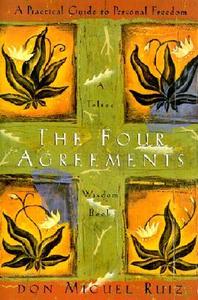 The Four Agreements by Don Miguel Ruiz is a very popular book in spiritual circles, so much so that I could list all of the four agreements long before I read the book. However, I felt that I should actually read this seminal work so that I could truly understand its meaning. Ruiz presents the Toltec belief system around suffering and happiness in the world. It argues that from the moment we are born, we begin making agreements with other people whether we actually want to or not. Our language is one of the first agreements: We have to share belief in the definitions of words in order to communicate. We have to agree on social behaviors in order for society to function. However, not all of the agreements we sign up for are healthy. These are the agreements we make that shatter our self-esteem and our happiness. They are the ones that teach us to judge ourselves and others harshly. In order to break away from those beliefs, Ruiz presents four agreements which he argues will change one’s life if one is able to follow them. The four agreements are: 1. Be impeccable with your word. Following these four agreements, one is able to slowly change one’s visions and beliefs. One can break away from judgment, hatred, lies, and fear. Instead, one can be reborn into a life based in love.
By being impeccable with one’s word, Ruiz is not just asking us to be truthful or to avoid lies. Instead, Ruiz believes that our words create our entire world. They are how we manifest positivity and negativity. By being impeccable with our word, one will be able to “take responsibility for your actions, but you do not judge or blame yourself” (31). Being impeccable means that we no longer call others derogatory terms because those words only reflect on who we are: We will express ourselves in love instead of hate. This is a challenge for most of us because the world we live in promotes both gossip against others and self-hatred. Not taking anything personally is a clear idea though one that is hard to put into practice for many. When someone yells at us, we judge ourselves and believe we have done something wrong. Instead, we should believe that they are yelling at us because of their issues and their upbringing. The way they treat us reflects more on them than us. Thus, we should not take their actions personally. This agreement can help heal old wounds by helping us to rewrite history under a new lens. By understand that people’s insults are based on their own insecurities, such as someone insecure in their own appearance attacking our appearance, then we can understand that the pain we took on actually belonged to someone else. Enacting this agreement can eliminate a huge amount of suffering that we create for ourselves. Assumptions are a part of our lives, and unfortunately, they undermine communication and relationships. As Ruiz argues, if we have the confidence to stop making assumptions and to ask questions, our world will change. Even if we are dealing with someone we have known for twenty years, we should never assume that they know what we want. We need to be clear in our desires so that no one has a chance to make faulty assumptions. Likewise, we need to ask others what they need so that we don’t make faulty assumptions either. The saying “to assume just makes an ass out of u and me” holds true in this agreement. Finally, Ruiz states that we should always do our best, though he is clear that our best will always be changing. On the days we are sick or weak, our best won’t be as strong as it is on our healthy days. That doesn’t mean that we should give anything less than our all, though. However, it also does not mean that we should overdo it. Furthermore, Ruiz believes that once we begin to do our best, we will be happier because we are no longer working for rewards. We are working to do what makes us happy instead. Ruiz states, “[The four agreements are] so simple and logical that even a child can understand them” (88). He’s right, and that is one of my complaints about this book. It is very simply written in many places. It can also be unnecessarily repetitive. The English teacher in me wanted to pull out a red pen to edit it down; this short pocket book of only 140 pages could have been far less than 100 and still been as successful. I also found Ruiz’s views a bit narrow at times. His concepts about childhood presume that a child is not raised in an abusive home and that every child is loved and cared for properly. That’s unfortunately not true. Even by the tender age of two, some children have already taken on emotional, spiritual, and physical responsibilities in dysfunctional homes in order to protect themselves. Furthermore, I think that Ruiz’s beliefs that positive visions can create anything are overly idealized. While we can create our own happiness, we cannot visualize anything into being. No matter how hard I try and how much I visualize it, I will never be a six foot tall runway model in this lifetime. However, I can find happiness in my body as it is. I just will have to find another career to enjoy. I also strongly disagree with Ruiz’s perspective on mental illness; I could fill an entire post just on that topic. Despite the weak editing and its differences in view from my own beliefs, The Four Agreements is a book that has changed many lives and has the potential to change many more. If you are looking to find a way to be happier in your life, especially if you are in a situation that seems impossible, this book could provide the foundation for you to work from. I also think it could provide a great platform for couple’s counseling for partners who find that communication and compatibility have disappeared from their relationship. © 2015 Green Heart Guidance, LLC  Problems do not go away. They must be worked through or else they remain, forever a barrier to the growth and development of the spirit. ~M. Scott Peck Unexpressed emotions will never die. They are buried alive and will come forth later in uglier ways. ~Sigmund Freud Walking away from your feelings won’t prevent them from catching up with you. ~Tina Donovan Like many bloggers, I will check the keywords that people use to find my posts. Mostly I do it out of curiosity and sometimes amusement, though occasionally a search term can be provocative. One such recent search was on “eliminating emotions.” I laughed that Google took someone to my site in search of that answer since my work is very much about dealing with emotions rather than repressing or eliminating them. In short, it is not possible to eliminate emotions even though that concept might seem incredibly convenient. We are all born with a mind, body, and spirit connection. All aspects of us are integrally linked, and there is no way to separate them. We store our emotions in our body. In recent years, organ transplants have become more common and have helped give us a very clear example of stored emotions. Many of us have heard stories where recipients of organ donations might suddenly find themselves loving baseball when they previously hated sports or craving fried chicken when they were previously a vegan. This results from the stored emotions of the organ donors. When the recipients eventually meet the donors’ families, they usually find that their new likes and dislikes are the same as the donors'. We especially store emotions in times of trauma when we can’t or won’t face them. I once attended a spiritually oriented Meetup where a man proudly announced that emotions weren’t an issue for him. He declared that he just stored his emotions in a box and shoved them away. There was a palpable emotional cringe in the room when he made this pronouncement as so many of the other attendees recognized how unhealthy this man’s solution to emotions actually was. When we store emotions in a metaphorical box, we are actually shoving them into our body. There, the emotions fester until eventually they erupt into pain. In some cases, that pain is actually part of a disease. As Gabor Maté explains in When the Body Says No: The Hidden Cost of Stress, Habitual repression of emotions leaves a person in a state of chronic stress, and chronic stress creates an unnatural biochemical milieu in the body… Disease, in other words, is not a simple result of some external attack but develops in a vulnerable host in whom the internal environment has become disordered. We may think that by ignoring our emotions we are solving our problems in a quick and easy way, but in the long run, we will pay the price.
How these emotions manifest as illness varies widely by the person’s genetics, situation, and spiritual resolve. There are multiple studies on Chronic Fatigue Syndrome demonstrating a much higher proportion of CFS patients have a history of childhood abuse. Unfortunately, the media and many health practitioners have misinterpreted that this means that sufferers of Chronic Fatigue Syndrome have simply made up their symptoms as part of a mental illness. However, CFS is definitely not at all “in one’s head.” CFS is a result of infections and an adrenal system that has been blown out by years of constant intense stress due to that long-lasting abuse. Some who have studied the impact of emotions upon the body have found patterns in how emotions manifest into pain and illness. Heal Your Body by Louise Hay provides a list of the patterns she has seen over the years in how pain presents in many individuals. This website gives a summary of many of the symptoms and illnesses contained in the book. In my experience, I find that the book’s contents are often true or very close to the truth for most individuals. Heal Your Body is a great place to start in trying to determine what emotional and spiritual issues might lie behind your physical pain. So what do we do about these stored emotions in our body that can cause us pain and illness? It’s important to clear those stored emotions. In my personal experience, I find pain relief when I process something that I’ve stored in my body. It frees me and leaves me happier in the long run. It can also decrease the symptoms of Post-Traumatic Stress Disorder and general stress. There are many ways to do clear stored emotions; the best way for one person may not be the best way for another. Talk therapy is a great way to start, but I’ve found that one usually needs to do something to actively involve the body with the psychotherapy process in order to clear those stored emotions. Emotional Freedom Technique, EMDR, massage, acupuncture, yoga, craniosacral therapy, and energy work (like I do for my clients) are all great ways to help relieve the stored and festering emotional pain in our bodies. Emotions may seem pesky. In my own life, I’ve seen people around me who want to eliminate emotions. Whenever my ex-husband and I would have a fight, I would experience fibromyalgia flares that would last at least 24 hours. My ex-husband asked me to get my chiropractor to help me find a way to detach my emotions from my body so that I wouldn’t have to pay a physical price for our marital conflict. Unfortunately, it just doesn’t work that way. Our bodies, our minds, and our spirits are intimately linked, and in order to fully heal, we must address all parts of ourselves as an integral unit. © 2015 Green Heart Guidance |
Elizabeth Galen, Ph.D.
Holistic Life Coach and Categories
All
Archives
January 2023
|
||||||||||||
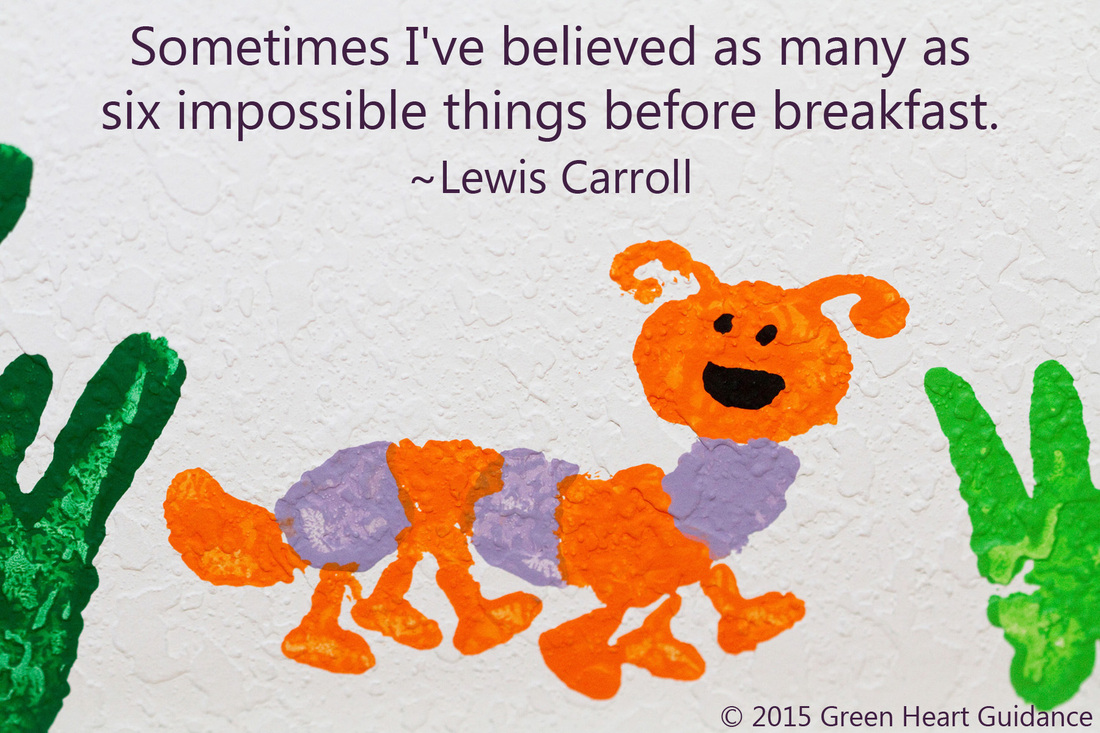
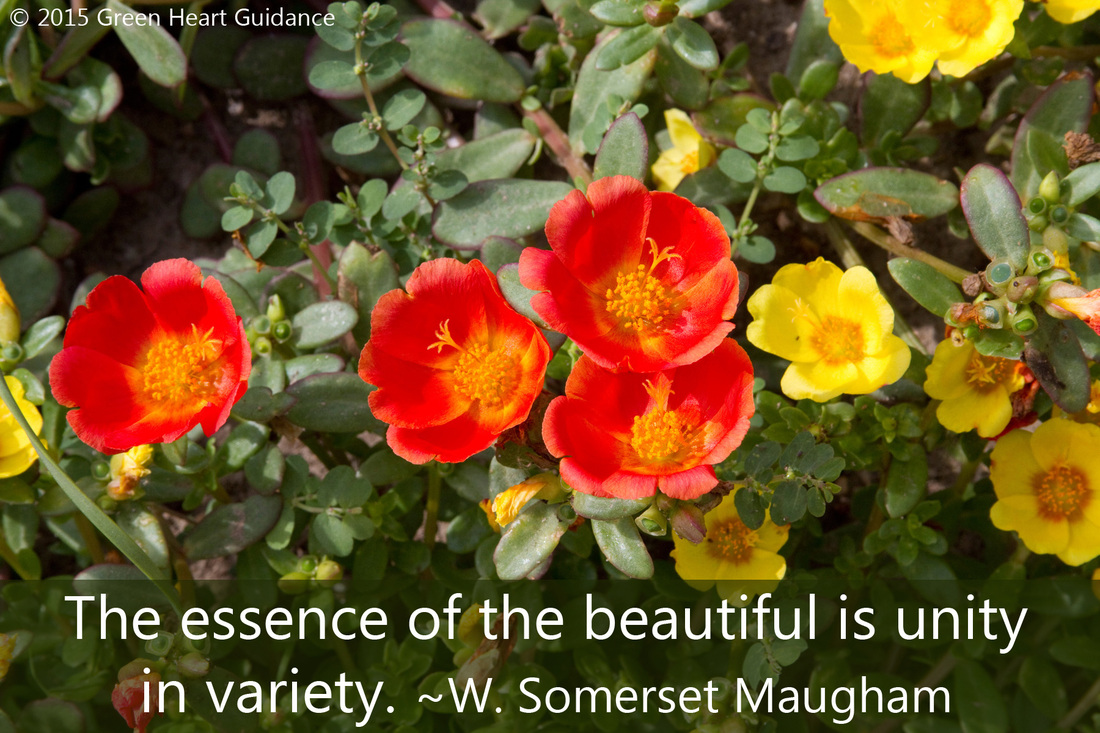

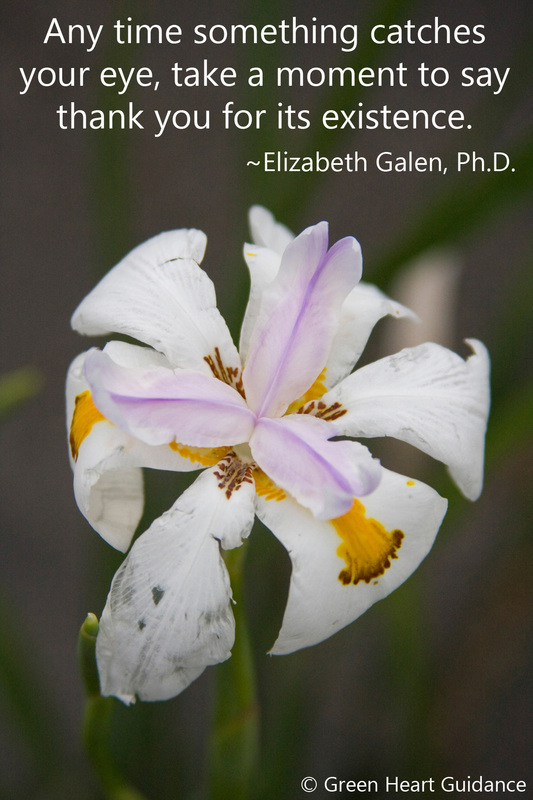
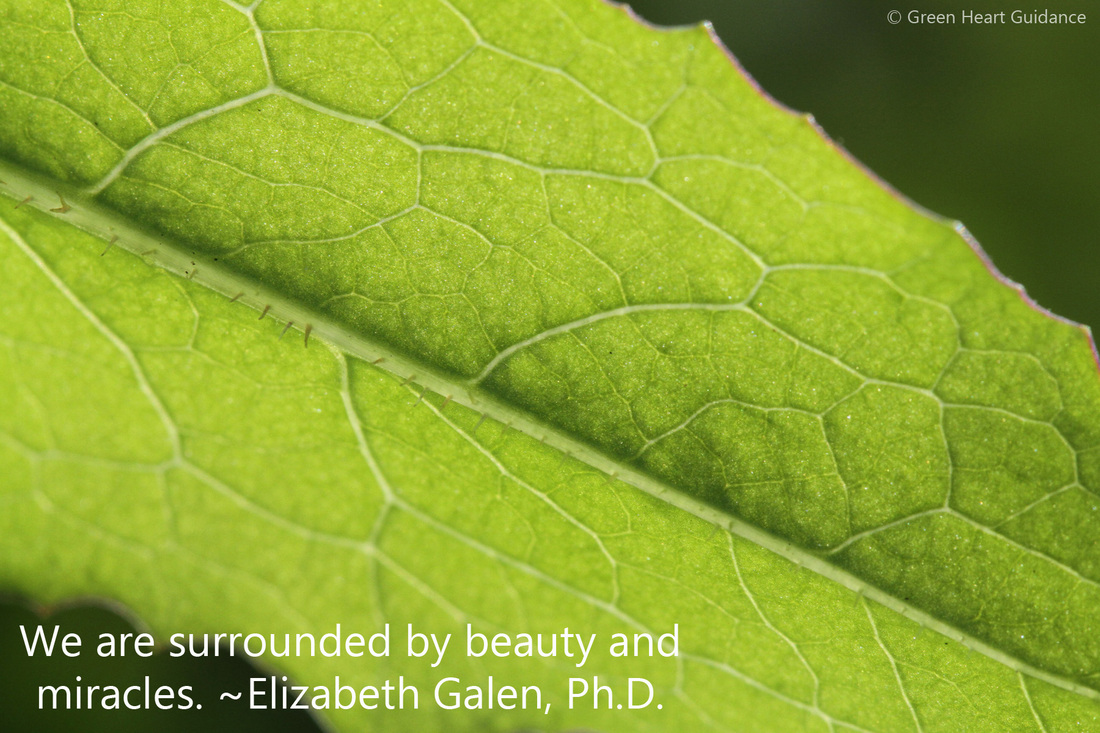
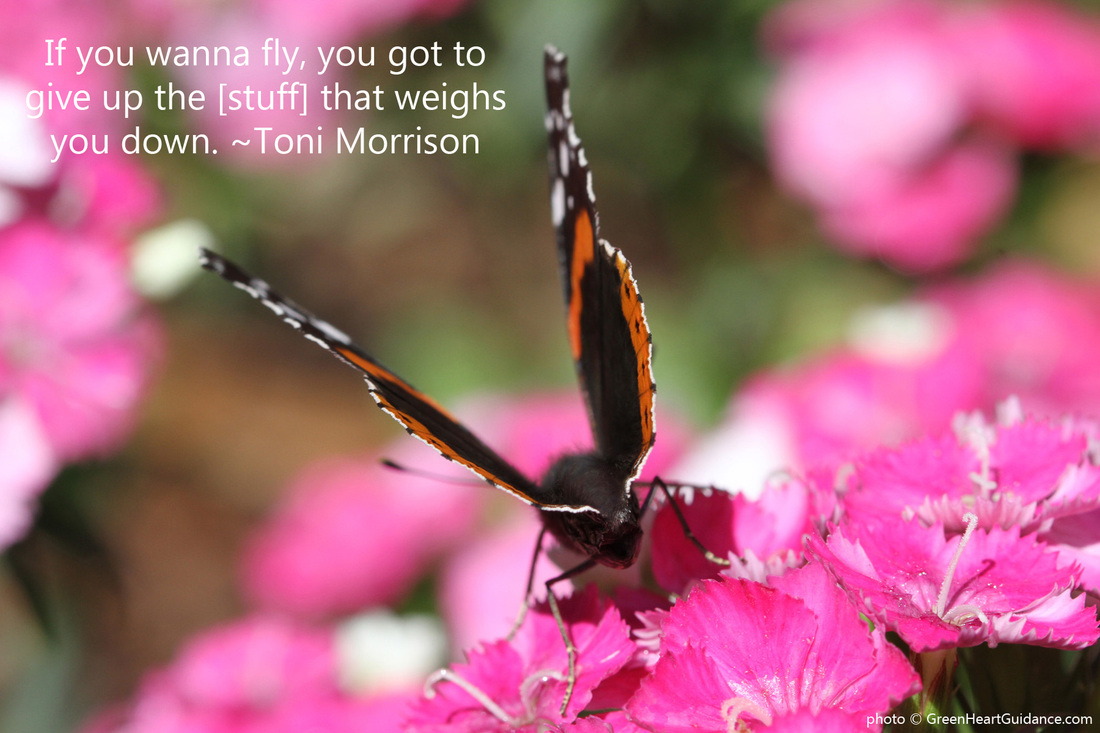

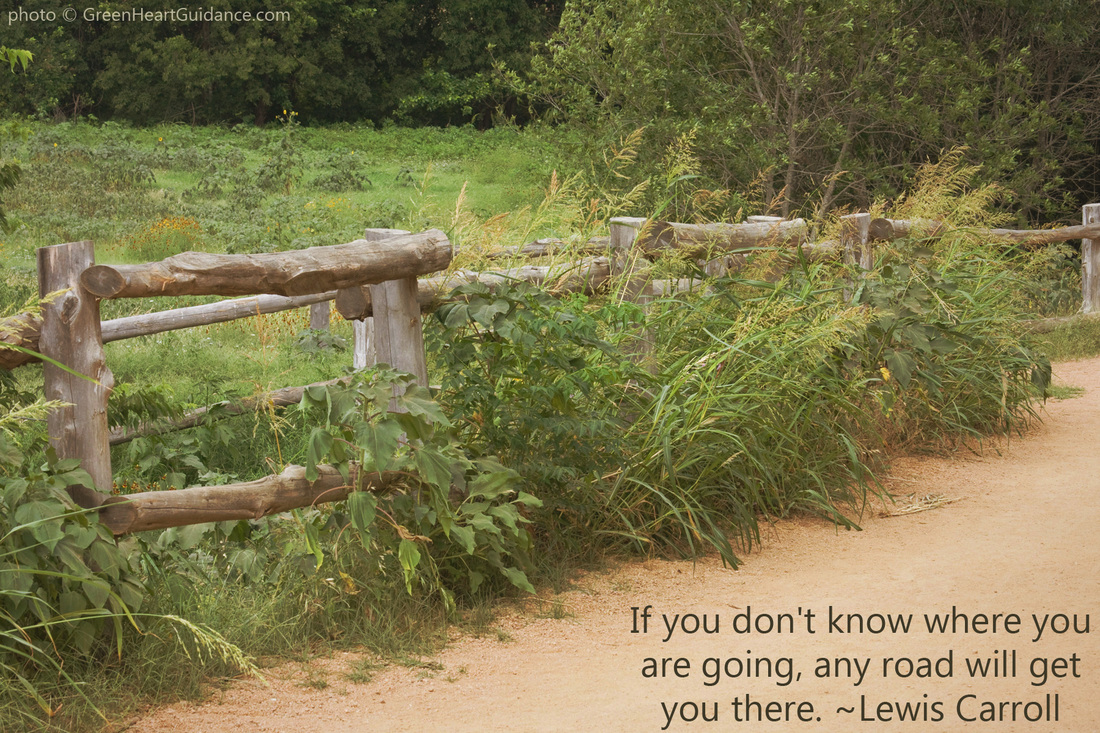
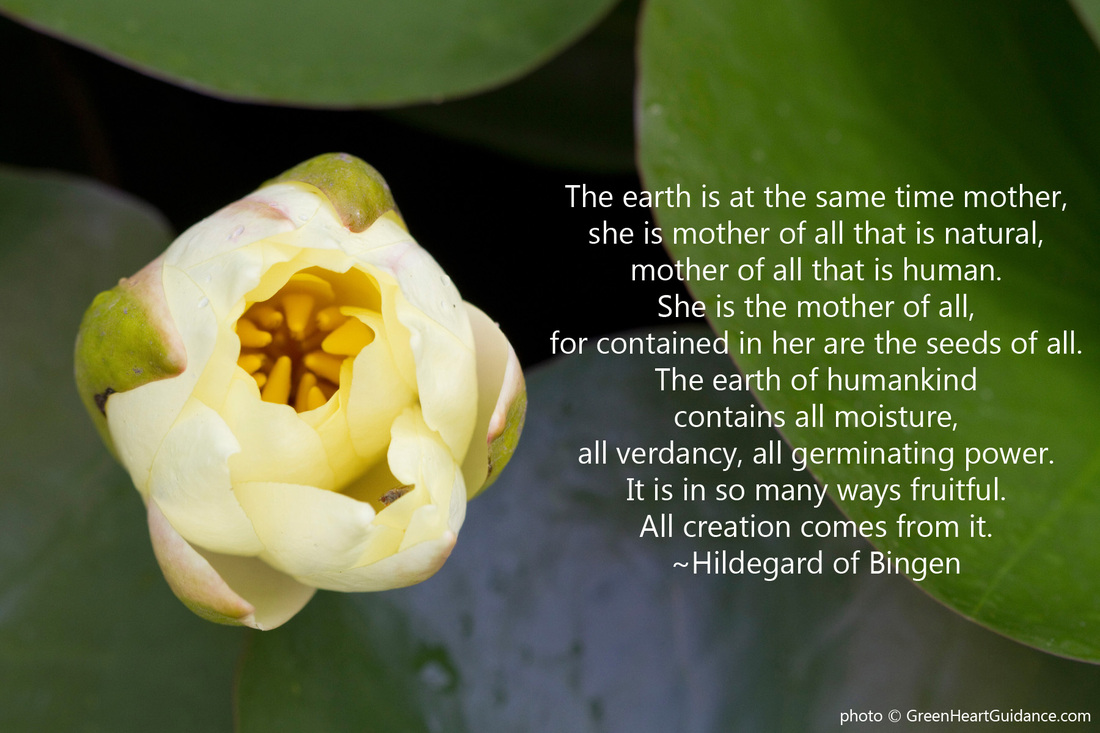
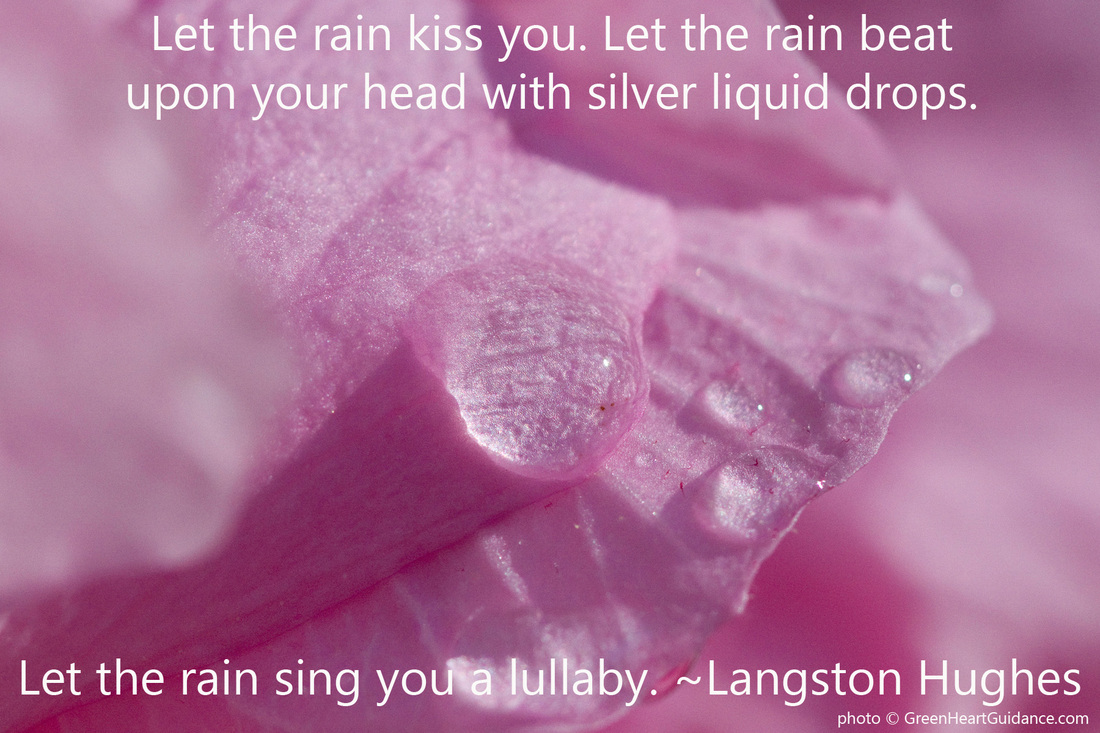
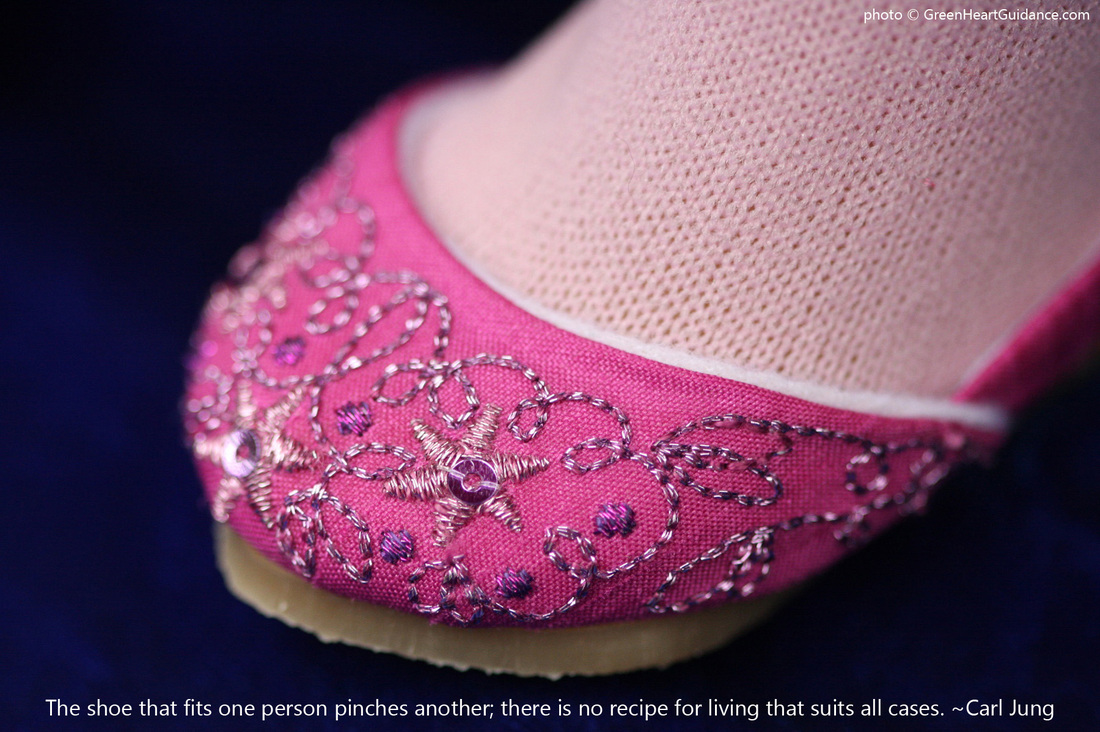
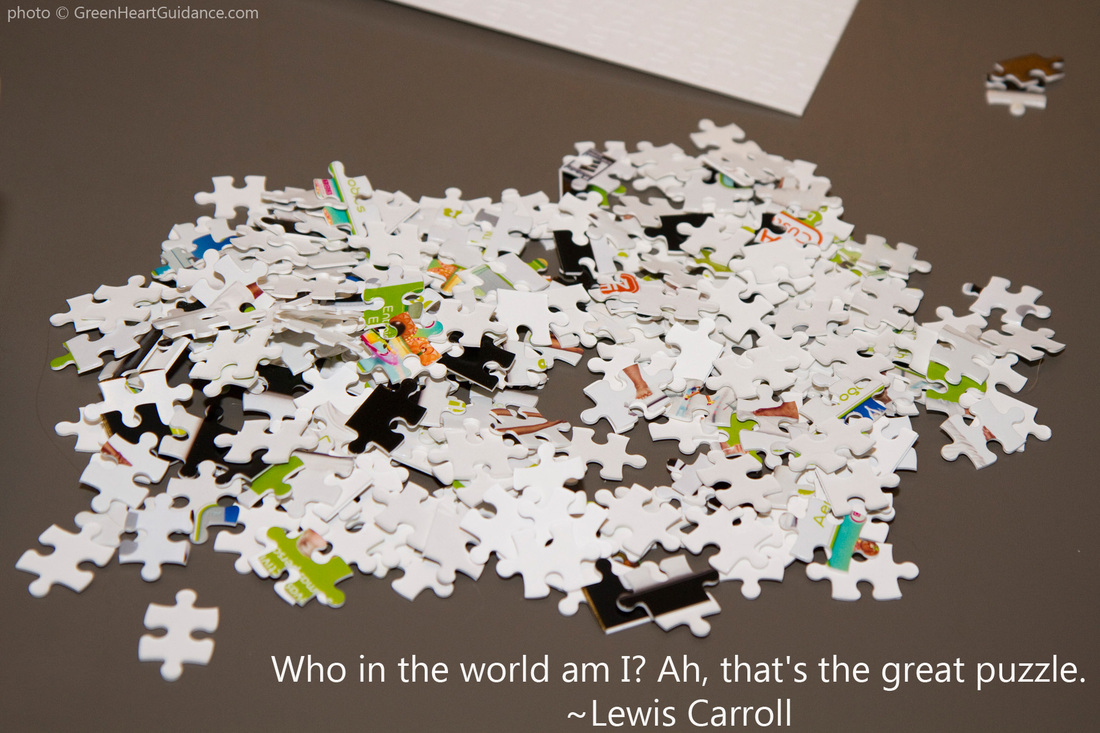
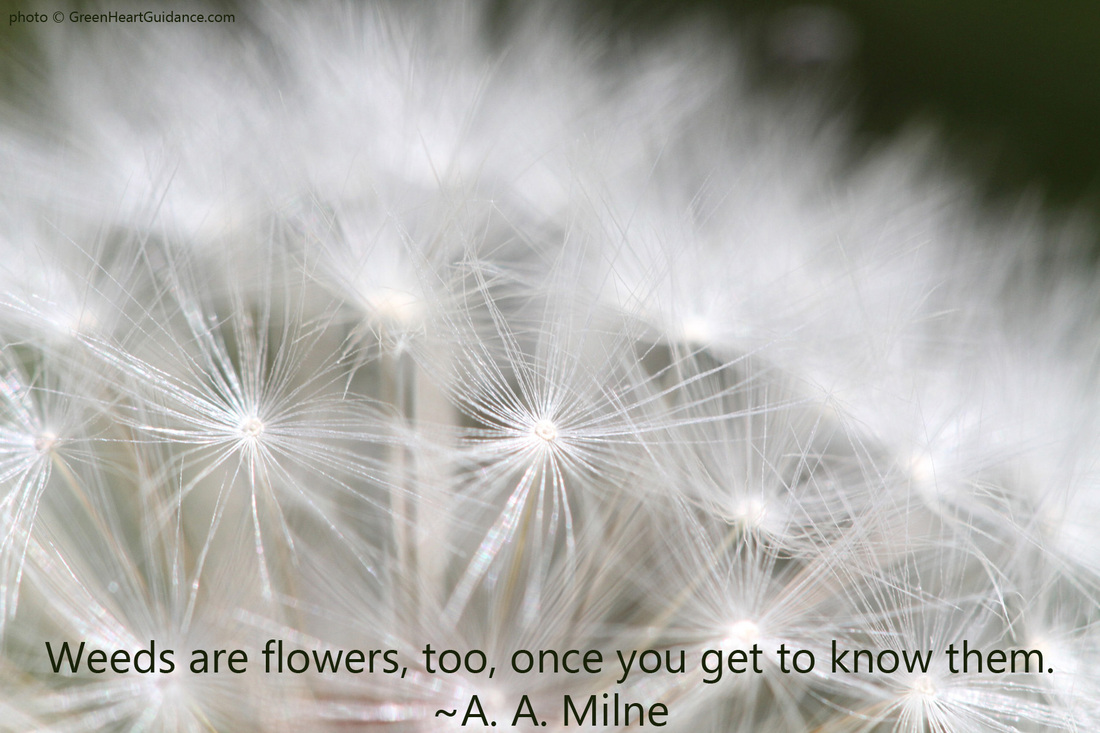
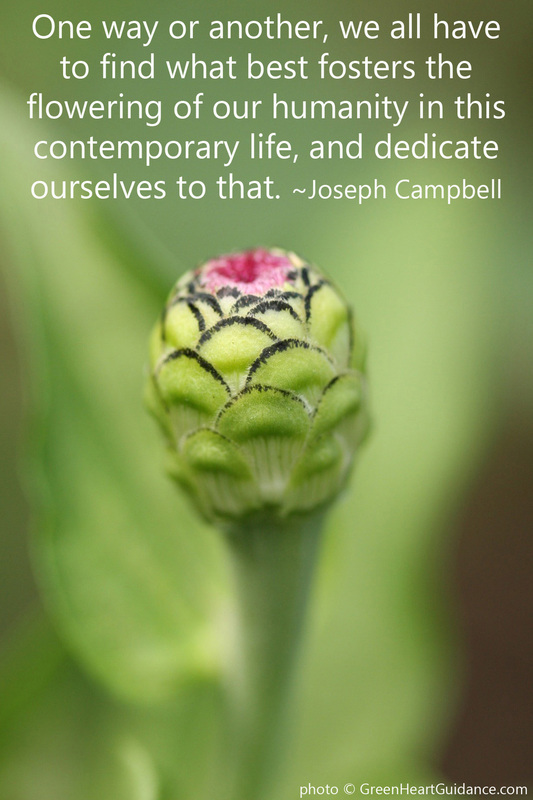
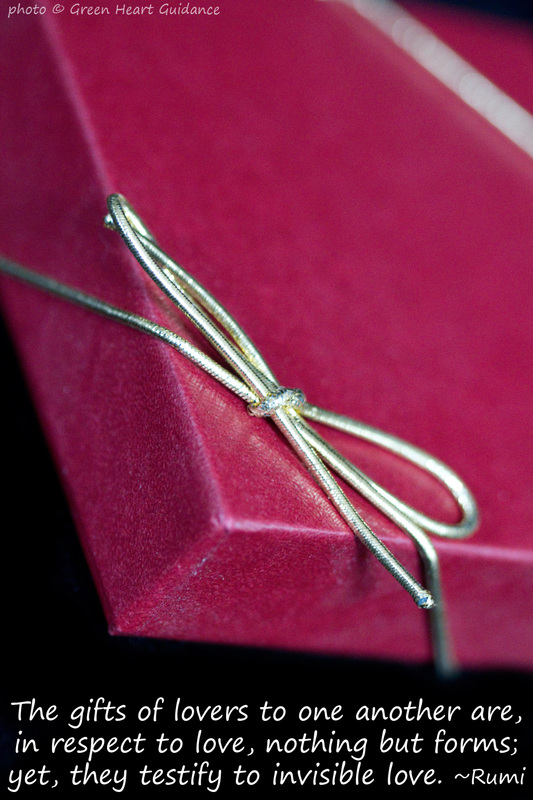
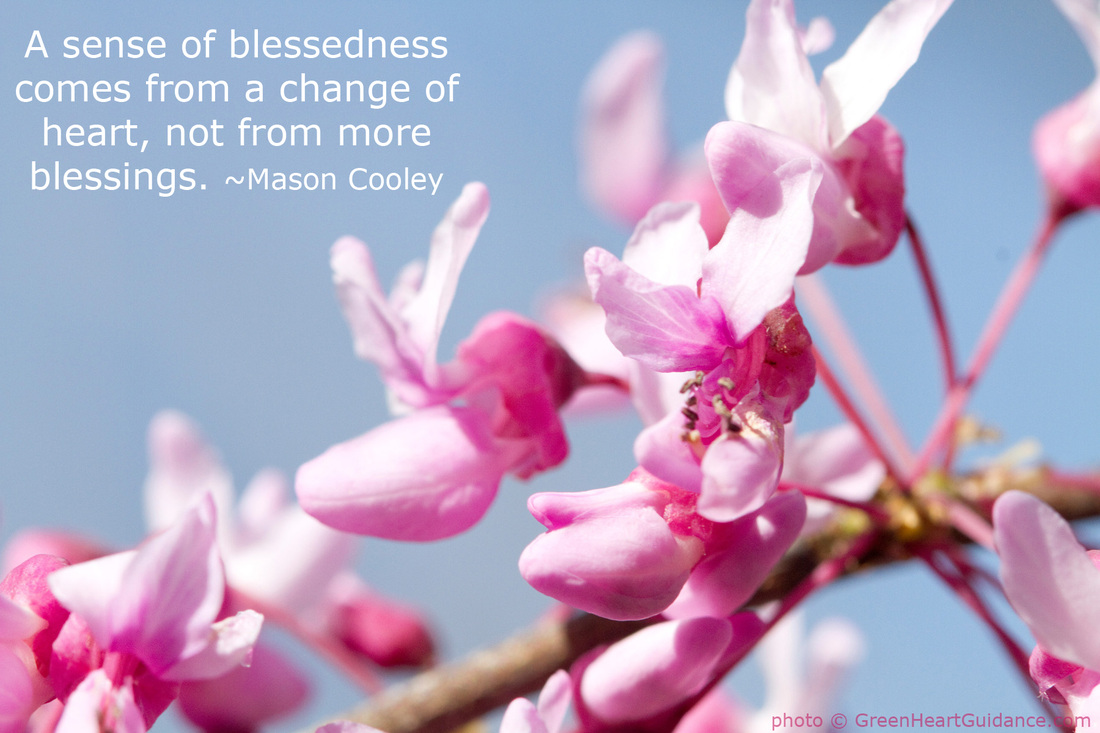
 RSS Feed
RSS Feed